(Photo courtesy of The Center on Juvenile and Criminal Justice)
Aging and neglected juvenile detention facilities across the nation continue to endanger some youth and hamper rehabilitation, leaving offenders in prisonlike conditions that often are cramped, unsanitary, archaic and poorly ventilated, advocates say.
More than 48,000 juveniles are confined on any given day in the United States, according to a 2019 report by the Prison Policy Initiative. Two-thirds are held in the most restrictive detention: juvenile correctional centers that resemble jails and prisons meant for adults.
Attorneys, legislators, and advocates across the country say they are working to address these issues.
A civil rights lawsuit filed in July by the Protection and Advocacy for People with Disabilities Inc. claims “dangerous, inhumane and unconstitutional conditions, policies and practices” exist at the Charleston County Juvenile Detention Center, a pretrial facility in South Carolina.
The lawsuit cites overcrowding, water damage, mold, bugs, rats and sanitation. As a result of staying at the facility, it claims young people “have suffered and continue to suffer serious and irreparable physical, psychological, mental and emotional injuries.”
“It shocked me the first time I went into the facility,” said Annie Andrews, a former public defender in Charleston County. “What I saw is something that I expected you might find in a developing country, and I certainly was shocked to see that Charleston, which is one of the richest counties and cities in South Carolina, would treat children this way.”
In August 2019, all 24 girls at the Youth Rehabilitation and Treatment Center in Geneva, Nebraska, were evacuated because of water damage, mold, holes in walls and wires hanging from the ceiling, according to a January report from the Nebraska Legislature’s Health and Human Services Committee.
“I have no doubt in my mind that the state of Nebraska was treating children worse than their own parents had been treating them,” state Sen. Sara Howard said in an interview with News21.
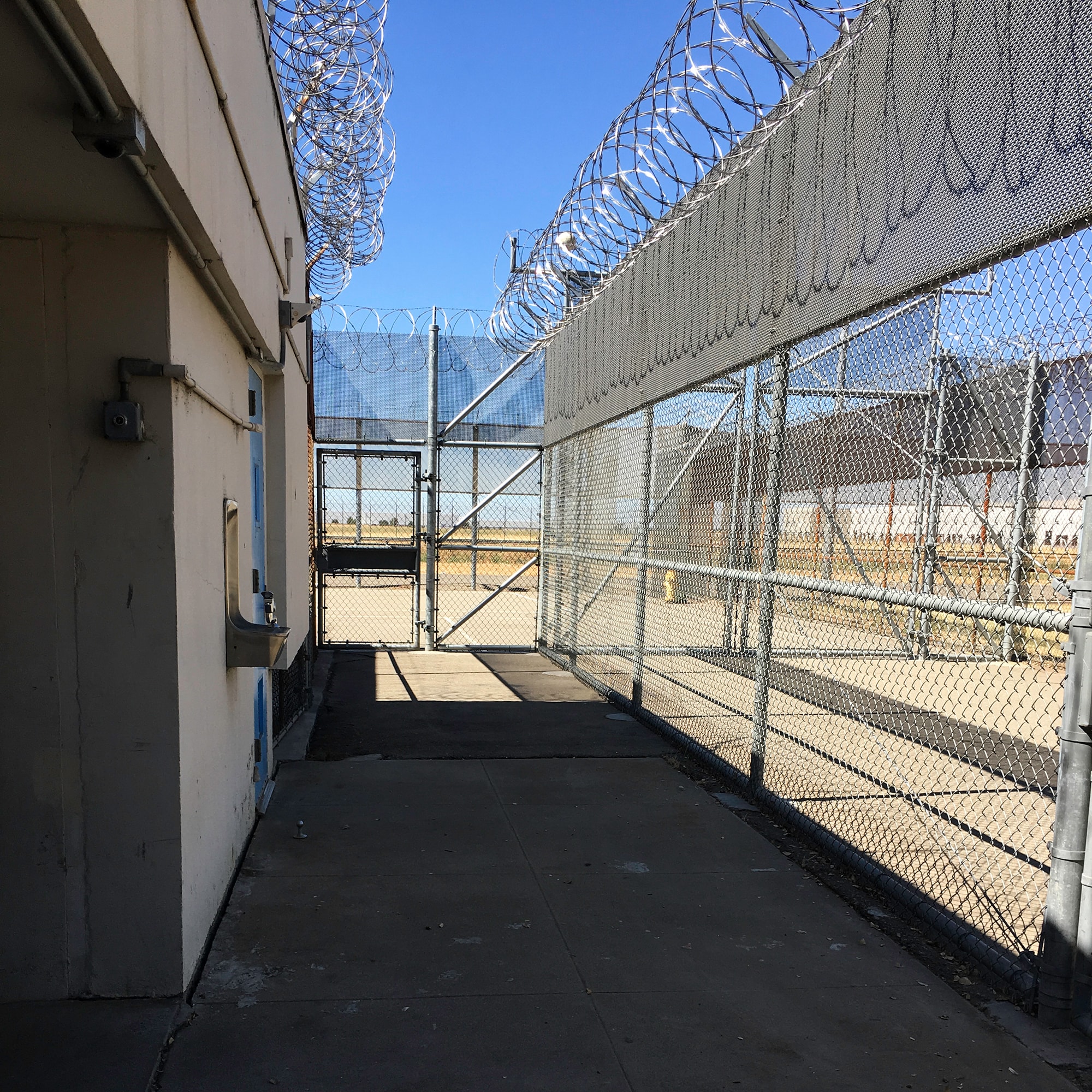
A 2019 report from the nonprofit Center on Juvenile and Criminal Justice criticized California’s Division of Juvenile Justice for subjecting youth to “inhumane conditions” in its three “prison-like” facilities, including the N.A. Chaderjian Youth Correctional Facility in Stockton. (Photo courtesy of the Center on Juvenile and Criminal Justice)
In May, California Gov. Gavin Newsom announced a plan that would close the state’s three Division of Juvenile Justice facilities, a move advocates have long supported.
“Today, as it has for more than 100 years,” the state system is failing youth and neglecting its obligation to rehabilitate and keep young people safe, according to a 2019 report from the Center on Juvenile and Criminal Justice in San Francisco.
Court monitoring of the California Division of Juvenile Justice ended in 2016 along with a 12-year lawsuit regarding abuse and poor conditions within the youth facilities. But the division has “returned to its historical state of poor conditions, a punitive staff culture and inescapable violence,” according to the Center on Juvenile and Criminal Justice.
Renee Menart, co-author of the report, said the facilities are modeled after the institutional setting of many prisons.
Sue Burrell, the policy director with the Pacific Juvenile Defender Center, wrote in a 2013 report that metal doors, lack of light, furniture bolted to the floor and concrete spaces all “all contribute to an unfriendly, surreal environment for youth at a critically vulnerable point in their lives.”
“All of this feeds into a young person’s view of themselves as less than human,” Burrell said in an interview with News21.
Blake Casper, who was committed to a Nebraska facility for about seven months when he was 13, said he slept in rows of beds just 2 feet apart from other boys, some of whom were six years older than him.
“It was very dehumanizing,” Casper said, adding that at no point did he ever feel safe. “Sort of just strips you down to an almost animal-like state.”
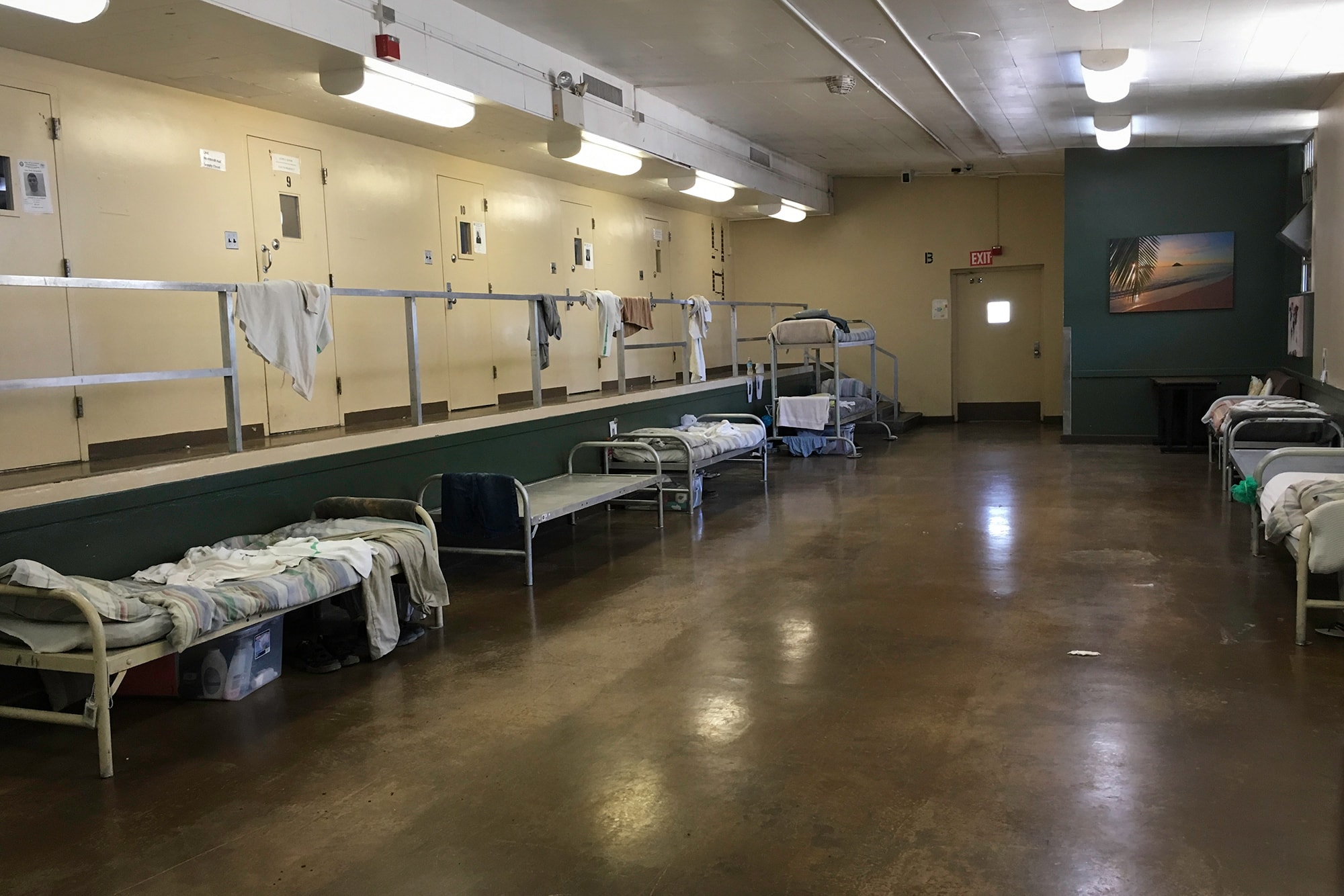
The O.H. Close Youth Correctional Facility in Stockton, California, has an open dormitory-style sleeping arrangement that advocates say offers young people inadequate privacy and puts them at higher risk of abuse and violence from others. (Photo courtesy of the Center on Juvenile and Criminal Justice)
The U.S. Department of Justice concluded two decades ago that juvenile facilities should not use large dormitory settings, saying they offer little privacy, foster competition and leave younger kids susceptible to abuse, according to a 2019 report by the Center on Juvenile and Criminal Justice.
Menart said over-isolation, as well as a lack of privacy, plague the three youth correctional facilities operated by the California Division of Juvenile Justice.
O.H. Close in central California uses an open dormitory setting; detainees at Ventura in southwest California and N.A. Chaderjian in central California sleep in cells similar to those in prison. Youth at Ventura spend extended periods of time in cells that have a locked metal door and metal bed frames with 3-inch-thick mattresses, Menart said.
At N.A. Chaderjian, youth stay in a double decker row of concrete cells with a small mattress, a concrete bed frame, a small, fogged window and a metal toilet seat next to the door, which provides no privacy.
Sebrina Washington said her son spent 10 months at the Charleston County Juvenile Detention Center in South Carolina, beginning in July 2019.
She said detainees are kept in two-person cells for more than 22 hours a day and, because of overcrowding, three or four are confined to each cell, forcing some youth to sleep on the floor. Her claim is supported by the July lawsuit filed by Protection and Advocacy for People with Disabilities.
“Somebody needs to be held accountable for not doing their job, because a prison cell or a jail cell is not doing anything for these kids when they’re mentally ill,” Washington said.
David H. Zoellner, an attorney with Protection and Advocacy for People with Disabilities, witnessed youth sleeping on the floor in a “large molded plastic form (sort of like a stretcher),” during a 2018 visit.
The group filed a lawsuit against various parties at the Charleston County Sheriff’s Office and the Charleston County School District based on several factors, including interviews with at least 45 children or parents of children who are or have been at the county detention center.
Youth sleep in small, locked cells with only a thin mattress and a metal or concrete bed frame, according to the lawsuit. Pillows are not provided and “often blankets are denied either as punishment or for other reasons,” despite inadequate temperature control in cells.
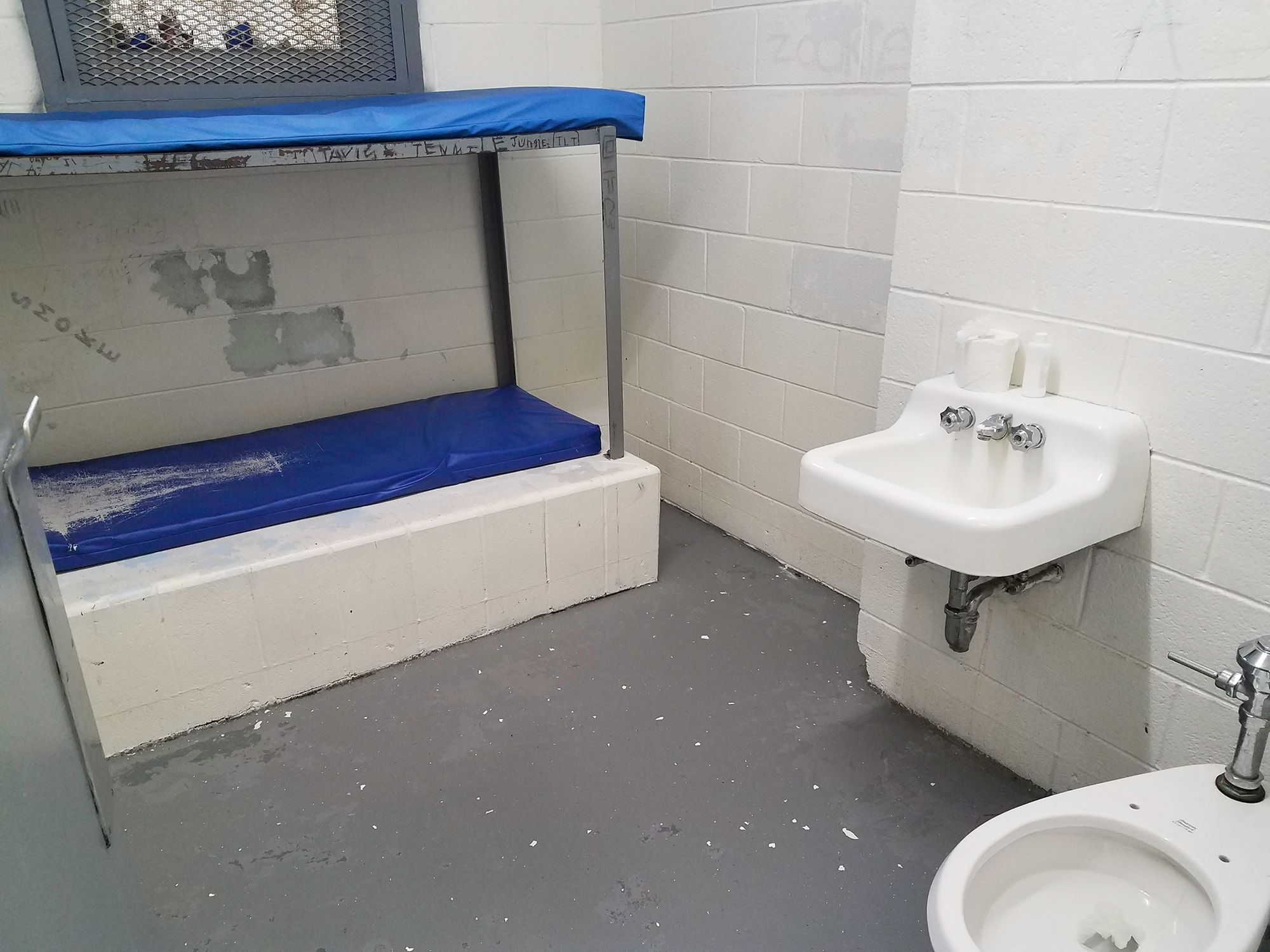
Living conditions are tight in cells in the Charleston County Juvenile Detention Center, a pretrial facility in South Carolina. A July lawsuit alleges that detainees are kept in cells for more than 22 hours a day and, due to overcrowding, some are forced to sleep on the floor. Bugs, rats and sanitation issues, such as mold and overflowing toilets, are common, the suit says. (2018 photo courtesy of David Zoellner)
Since 2018, attorney Annie Andrews has represented more than 100 kids who have been incarcerated at the Charleston detention center.
One of her clients “said he forgot what outside smells like” as a result of not being able to go outdoors on a consistent basis. To prevent escapes, cell windows are covered by metal grating and screens, making it impossible to see outdoors, according to Zoellner.
“I’ve had clients who’ve said they’ve not been allowed to go to school, even though they’ve begged to go to school to get out of their cells,” Andrews said.
Zoellner said he was told during a 2018 visit to the center that the detainees do not go outdoors during the summer months because the “coach comes only during the regular school year.”
Youth leave their cells for court, meals, professional and personal visitation, as well as six hours a day outside of their cells during the school year and two hours of visitation and recreation daily according to Senn Legal, LLC who responded on behalf of the Charleston County Sheriff’s Office.
Charleston County School District officials declined to comment on the lawsuit.
After three nights of sleeping in water-damaged rooms at the Youth Rehabilitation and Treatment Center in Geneva, Nebraska, a group of girls refused to return to their rooms and barricaded themselves in the office.
Using the office phone, they made calls to the Nebraska Ombudsman’s Office, the Child Protective Services hotline and their parents, according to a 2020 report by the Nebraska Legislature.
Howard, the Nebraska legislator, said the girls reported being forced to live in unhealthy and unsafe conditions — the same conditions that would warrant the state to remove a child from their home.
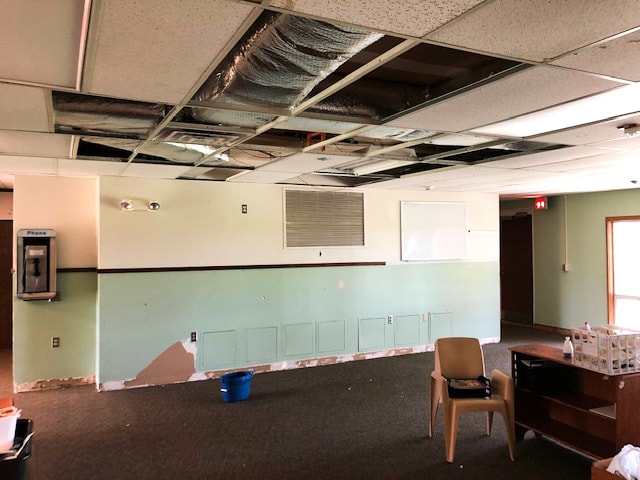
At the all-girls Youth Rehabilitation and Treatment Center in Geneva, Nebraska, detainees broke fire sprinklers and water pipes a dozen times from May to August 2019. During a visit in August 2019, state senators found unfinished repairs. (Photos courtesy of Nebraska state Sen. Sara Howard)
The barricade took place on a Monday, and Howard and other state senators made a surprise visit to the facility that Friday. They observed significant damage, including “broken lights in the rooms used for confinement and one girl who was confined in her room with no light and no mattress.”
The girls told the senators they were not allowed to go outside and they frequently played cards or watched TV.
“These were kids who were using logic, who said, ‘I don’t have anything else to do. The state of Nebraska is not providing me with a safe place to live, so I’m going to tear this building up so that I can get out of here,'” Howard said.
The Nebraska Department of Administrative Services reported a surge in vandalism at the center in Geneva in October 2018; however, the maintenance staff later that year was told not to repair any damage.
Mike Finley, who worked for maintenance at the Geneva facility for almost 13 years, said he and the maintenance staff were told “if they destroy (the rooms), they’re going to stay destroyed.”
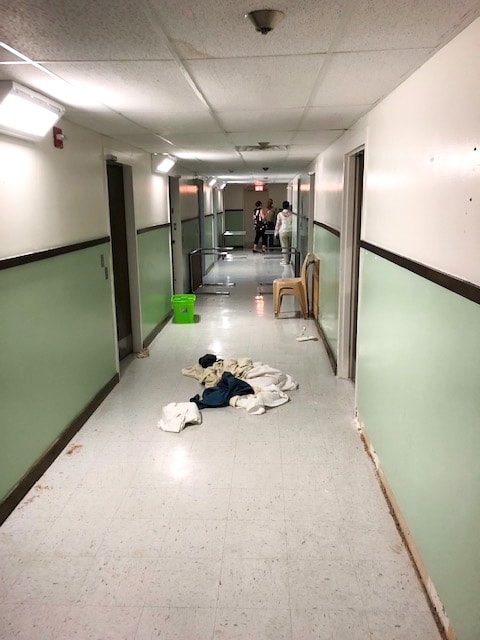

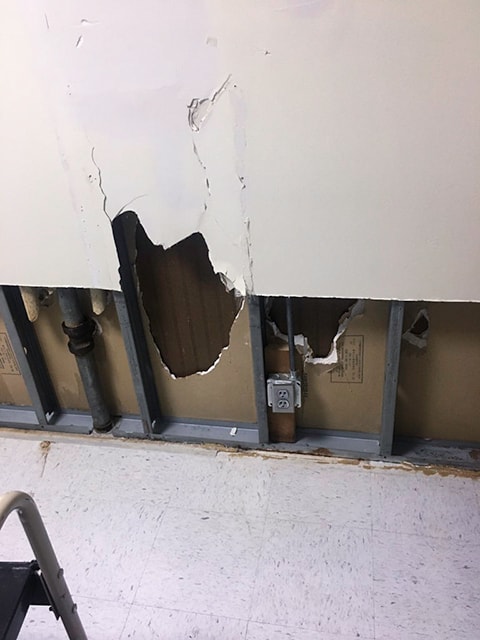
The Youth Rehabilitation and Treatment Center in Geneva, Nebraska, reported a surge of vandalism in October 2018 as the girls clawed into drywall, broke walls and knocked down light fixtures. Mike Finley, who worked maintenance at Geneva for 13 years, said that staff had to cut out the drywall near the floor (right) due to the water damage after a series of incidents where detainees broke fire sprinklers. (Photos courtesy of Sara Howard and Mike Finley)
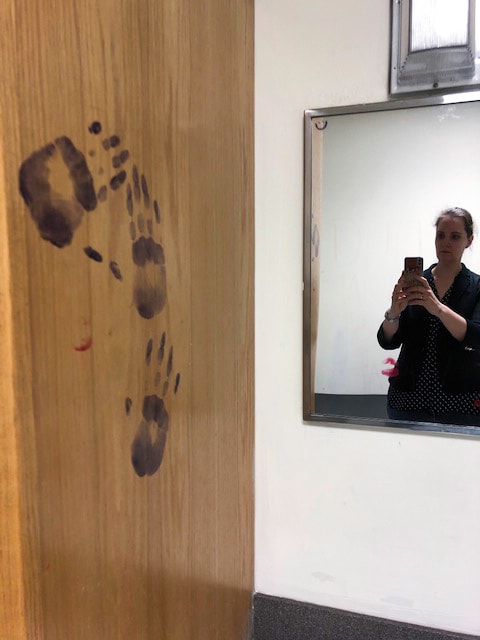
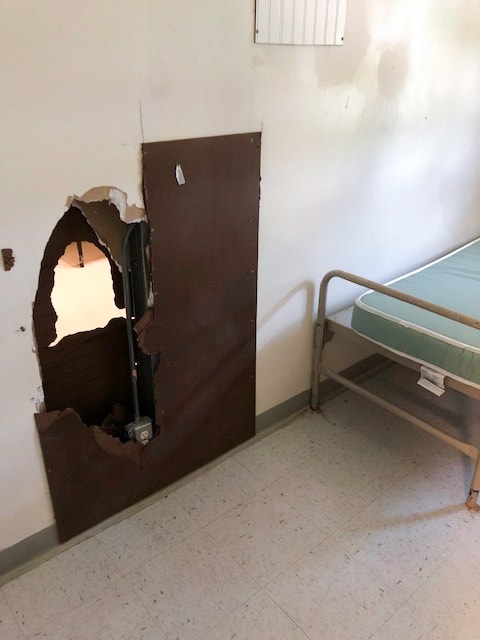
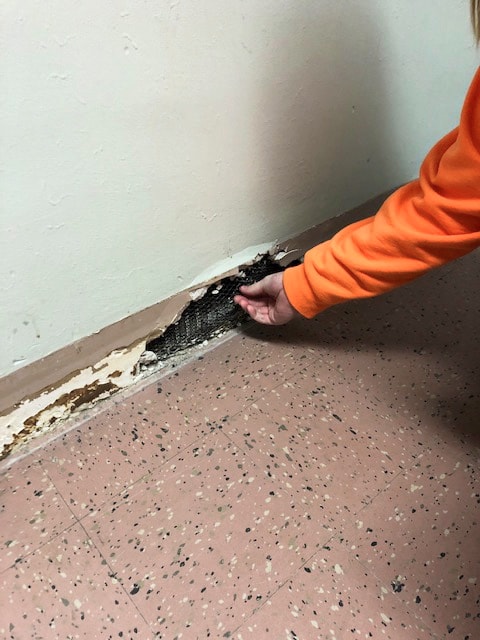
Nebraska state Sen. Sara Howard found extensive water damage, graffiti and holes in the walls while visiting the Youth Rehabilitation and Treatment Center for girls in Geneva with other legislators in August 2019. The girls told senators the sharp material exposed beneath the plaster could be used for self-harm, according to a January 2020 report from the Nebraska Health and Human Services Committee. (Photos courtesy of Sara Howard)
“Things just started to deteriorate from there on and it wasn’t good,” Finley said. “It was not good.”
Finley said the girls would “claw through the mortar of the cement block,” knock down light fixtures and take the plates off of the light switches.
The 2020 legislative report says the facility had “major unfinished repairs, significant water damage along with a resulting musty smell, holes in the walls between rooms large enough for the girls to fit through and broken walls with the sharp mesh exposed from the plaster and lathe.”
According to the report, multiple incidents of detainees breaking fire sprinklers and water pipes caused thousands of gallons of water to spill into rooms and hallways and destroyed the air-conditioner.
“Geneva was the worst experience of my lifetime,” said Marlena Knight, who was 18 when she was released from the center in January 2018.
In a comment to News21, a spokesman for the Nebraska Youth and Rehabilitation Center said Department of Health and Human Services CEO Dannette R. Smith was the catalyst for moving the girls from Geneva and immediately began to develop a plan to address needs of youth.
In South Carolina, Sebrina Washington, who visited her son many times at the Charleston County Juvenile Detention Center, describes a “nasty” facility with mold and flooding rooms.
The July lawsuit claims the Charleston County Juvenile Detention Center fails to maintain the facility “in a sanitary and safe condition,” as it “wreaks of mold and plays host to rodents, spiders, ants, roaches, bed bugs and termites.”
Additionally, children “often suffer from bug bites and rashes and are visited by rats.” Andrews said she has witnessed bugs jump off her clients and heard rats in the ceiling.
“Kids are confined to the Charleston County Juvenile Detention Center and are exposed to traumatic conditions which sabotage the court’s central tenant and goal of rehabilitating kids,” Andrews said.
Detainees sometimes are forced to eat in their cells and use the water from the sinks to brush their teeth, even though that water is “milky-white in color, smells bad, and appears unsafe for drinking,” according to the lawsuit.
The facility regularly experiences overflowing toilets, which the lawsuit says causes contaminated water “to flow onto the same floors where children have been required to sleep in overcrowded conditions.”
The lawsuit also claims youth are required to “clean up the sewage on the floors using only a mop and water.” As punishment, youth are locked in the “wet cell,” a small, dark, windowless room the size of a mop closet, for two to five days at a time.
Due to plans of a new facility, there are no new plans for major renovations but the building has undergone roof repairs, mold remediation and has received new paint, according to Senn Legal, LLC on behalf of the Charleston County Sheriff’s Department. They also said while the building is old, it is not unsafe, unsanitary or inhumane.
In 2019, the Center on Juvenile and Criminal Justice investigated the California Division of Juvenile Justice facilities and found them to be outdated, unsafe and poorly maintained.
Division of Juvenile Justice facilities hold youth in cold, prisonlike conditions with rusted or nonoperational restroom facilities, as well as water damage caused by leaking roofs, according to a 2019 report from the Center on Juvenile and Criminal Justice, which Menart co-authored with Maureen Washburn.
“They don’t have an independent oversight agency looking at conditions within the facilities with the regularity and the transparency that we think is necessary,” Menart said.
Since 2006, the report said, no major changes have been made to any of California’s Division of Juvenile Justice facilities, which do not meet modern standards and continue to deteriorate. It also cites “troubling health hazards,” such as rusted showers, hand dryers and AC units, and numerous inoperable sinks and toilets in the N.A. Chaderjian and O.H. Close facilities.
California’s 2019 Juvenile Facility Standards requires that safety, sanitation and a schedule for maintenance tasks and inspections be identified and corrected in a timely manner.
In a statement to News21, the California Division of Juvenile Justice said it “takes our responsibility to rehabilitate the youth in our custody very seriously through education, rehabilitation, treatment, and a committed staff. We also work hard to ensure all of our facilities are well maintained, staffed and equipped to support efforts conducive to our rehabilitative goals.”
Advocates and representatives from Nebraska, California and South Carolina are working to make changes in juvenile justice facilities.
One bill in Nebraska, which addresses the Youth Rehabilitation and Treatment Centers in Kearney and Geneva, was tabled by the Legislature in March because of COVID-19.
It calls for such changes as requirements for keeping spaces safe and sanitary, implementing research- or evidence-based programming, naming a facility administrator for each center and developing an emergency plan.
The 2020 lawsuit against the Charleston County Juvenile Detention Center is the culmination of more than a decade of requests to improve conditions.
Despite years of talk of a new facility, including a statement from the county Sheriff’s Office announcing plans to open a new, $16 million facility in 2021, neither Andrews nor Zoellner know of current plans or budget.
“Plans for a new facility does little to nothing for the kids who are there right now, whose constitutional rights are being violated right now,” Andrews said.
About two weeks after the lawsuit was filed, youth from the Charleston County Juvenile Detention Center were moved to the fourth floor of the Sheriff Al Cannon Detention Center, the county jail.
Burrell, with the Pacific Juvenile Defender Center, said young people need supportive adults, social experiences with other youth and the opportunity to build skills and exercise judgment.
Juveniles in confinement, she said, “don’t have any liberty at all to make any kinds of decisions for yourself, and also you’re missing out on the whole social development that’s so important when you’re in your adolescent years.”
Thirty years ago, Missouri implemented reforms to their juvenile facilities that made their system the Missouri Model.
Under the Missouri Model, 27 centers across the state house fewer youth while keeping them closer to home, according to a report by the Annie E. Casey Foundation. That allows for smaller, therapeutic programming and more personal relationships between staff and youth, it said.
“The group model is probably the most important component of the Missouri Model, so it’s different than many other states where the youth may be treated individually,” said Amy Sax, senior program administrator for Missouri’s Division of Youth Services.
“It’s so important to be able to remove those (labels) and to put the youth in an environment, in a residential program where they feel safe, they feel secure, they feel free of labels and they’re able to be their authentic self,” she said.
Ike Somanas, Morgan Wallace and James Wooldridge are Buffett Foundation fellows.
Our content is Creative Commons licensed. If you want to republish this story, download a zip file of the text and images.